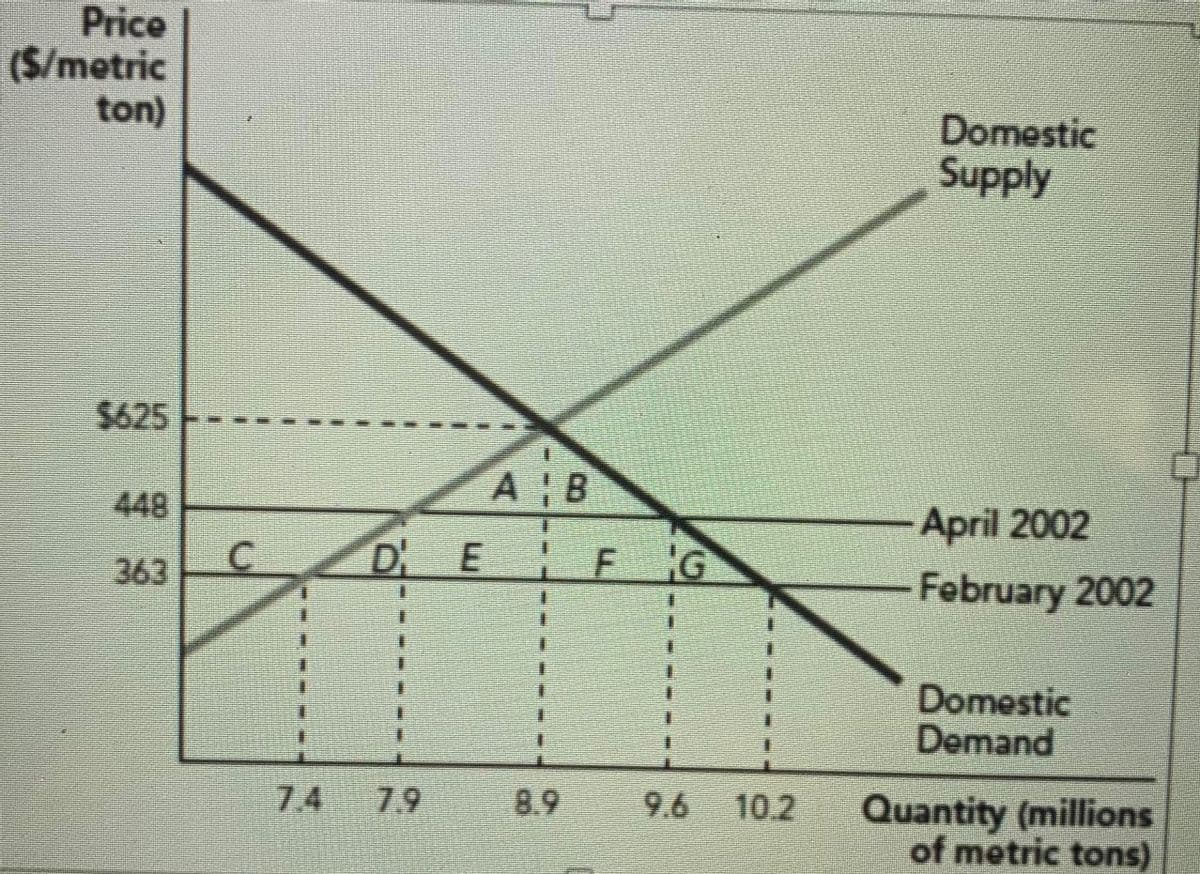In March 2002, then-President George W. Bush put a tariff on imported steel as a means of protecting the domestic steel industry. In February, before the tariff went into effect, the United States produced 7.4 million metric tons of crude steel and imported about 2.8 million metric tons of steel products at an average price of $363 per metric ton. Two months later, after the tariff was in effect, U.S. production increased to 7.9 million metric tons. The volume of imported steel fell to about 1.7 million metric tons, but the price of the imported steel rose to about $448 per metric ton. The supply and demand diagram below shows this situation (along with an estimated no-trade domestic equilibrium at a price of $625 per metric ton and a quantity of 8.9 million metric tons). Using the letters, determine which areas on the graph represent each of the following: a. The increase in producer surplus gained by U.S. steel producers as a result of the tariff b. The loss in consumer surplus suffered by U.S. steel consumers as a result of the tariff c. The revenue earned by the government because of the tariff d. The wasted resources and lost gains from trade (deadweight loss) created by the tariff
In March 2002, then-President George W. Bush put a tariff on imported steel as a means of protecting the domestic steel industry. In February, before the tariff went into effect, the United States produced 7.4 million metric tons of crude steel and imported about 2.8 million metric tons of steel products at an average price of $363 per metric ton. Two months later, after the tariff was in effect, U.S. production increased to 7.9 million metric tons. The volume of imported steel fell to about 1.7 million metric tons, but the price of the imported steel rose to about $448 per metric ton. The supply and demand diagram below shows this situation (along with an estimated no-trade domestic equilibrium at a price of $625 per metric ton and a quantity of 8.9 million metric tons).
Using the letters, determine which areas on the graph represent each of the following:
a. The increase in
b. The loss in
c. The revenue earned by the government because of the tariff
d. The wasted resources and lost

Trending now
This is a popular solution!
Step by step
Solved in 3 steps









